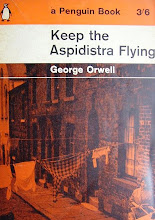
When I was a small girl I used to spend Saturdays wandering around London with my father. One of our regular haunts was the Arts Council shop which I seem to remember was in Saville Row. The counter near the front of the shop had a display of postcards in front of it which was at my eyelevel and I remember being entranced by a picture that seemed as real as a photograph. I realised that it couldn’t be a photograph as the people in it were wearing strange old fashioned clothes but even at that age (about five) I knew that my drawings would never be that good. The postcard that I went home with showed William Holman Hunt‘s “The Finding of the Saviour in the Temple” and I still have it, along with many more showing the work of the Pre-Raphaelite Brotherhood.
I suspect it was the fact that there were grown up ladies dressed as princesses in their paintings without anyone finding it silly that made them interesting as well but even at that age it was impossible to ignore the skill of these artists. The sunlight of Victorian England was trapped in their canvases and the extraordinary jewel like detail of every flower and strand of hair was a shock to my senses. For a child I had spent an unusually large amount of time in front of well known canvases and although I liked some of them I can’t remember feeling the same way about what I had seen before then.
Whatever the reason for my interest the Pre-Raphaelites still have a hold on me and when I saw that Birmingham Art Gallery and Museum were displaying the Burne Jones “Perseus” series (which belongs to Stuttgart’s art gallery) I suggested (without any hope of his agreeing) that Birmingham might be an interesting place to visit. Bearing in mind that he was facing four hours of driving I was a bit surprised when he said “yes”. The car doesn’t get used for much more than the commute to work a few miles away and shopping so this was a real expedition. We checked out parking in Birmingham’s city centre and he set up the sat nav.
I had intended to get up early but managed to oversleep so we set off later than planned. We live in an area where the suburbs start to break up into industrial sites and scrub so it wasn’t long before we were into open farmland. I don’t think the landscape could be described as particularly dramatic but on the way there and back I couldn’t help thinking how lucky I am to live here. Rolling hills, hedgerows and huge old trees. Cows, sheep and the occasional bird of prey, chilling out on a fence post and watching the traffic.
A visit to Birmingham was an opportunity to see my favourite source of quilt making supplies “in the flesh”. The Cotton Patch even provides a few parking spaces. Crammed very neatly into this small shop are fabrics from all over the world, magazines and books, and everything you could possibly need to make the perfect quilt. I have always wanted to buy one of the many Japanese magazines they have available so, head still buzzing from the motorway, I tried to look through them but then just caved in and bought the first one I had seen. I could have bankrupted myself in minutes there so I stuck to the plan and one magazine was my limit.
The sat nav decided to take us through Moseley via Shirley Green which has a lovely red brick Baptist church. We decided that Hall Green was a lot like Edgware and Moseley was definitely like Southall, even down to the traffic. The architecture is largely Victorian red brick and it occurred to me, as it has in the past, that this sort of thing survives when no one can afford to pull it down and rebuild. Lovely small intimate buildings from the late 19th and early 20th century with the occasional 1930’s bit of Art Deco, battered but still in use.
At last we managed to get into the city centre and after a couple of wrong turns we found the chosen car park. It was a short walk to the gallery past some really beautiful and recently cleaned buildings. That part of the city is pedestrianised and we walked through a mall into a large piazza like area with curved steps where people were sitting in the sunshine. Within minutes we were in front of the strange dramatic grey green canvases and drawings produced by Burne Jones in the 1880’s and 1890’s, displayed against rich teal walls. We are so familiar with Pre-Raphaelite art from reproductions in books but there is nothing quite like the real thing. For one thing the images in glossy coffee table books are sometimes larger than the actual painting. Like the teeny weeny “Death of Chatterton” by Henry Wallis. We mused about “Beata Beatrix” and “Proserpine”, made knowing “we used to be art students” type comments about their techniques and then wandered off to see some of the rest of this surprising gallery. There followed the obligatory visit to the shop to buy some postcards and then it was back into the sunshine for something to drink and, alas, back into the car for the long drive.
Home, backs aching and heads spinning, it was hard to get used to the fact that we had been a long way off and back again in the same day. We ought to do it more often, other people would, but I wonder how many would travel that far because of a few old paintings. Still mad for the Pre-Raphaelites after all these years. And still buying postcards.
http://www.bmag.org.uk/



















